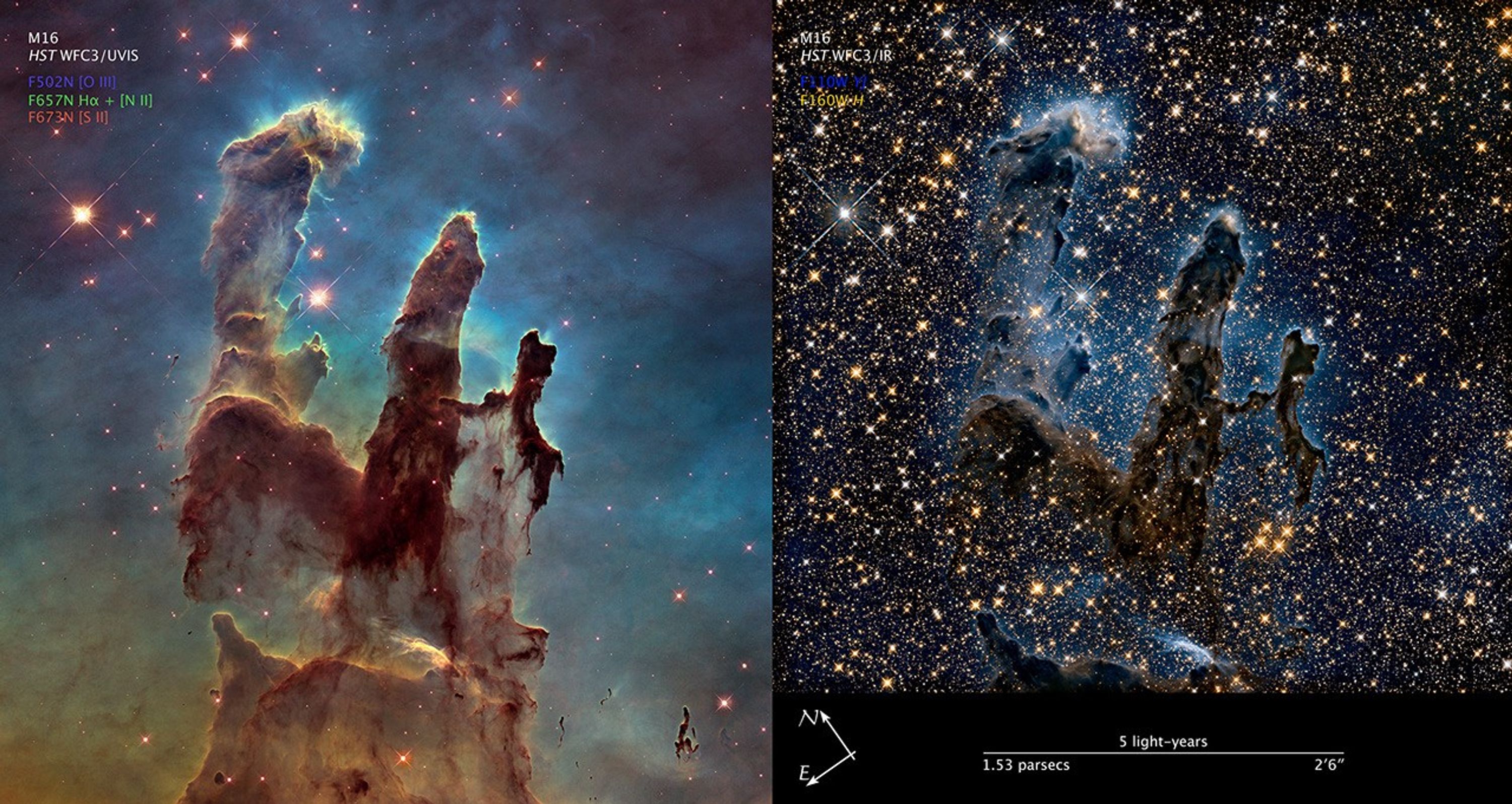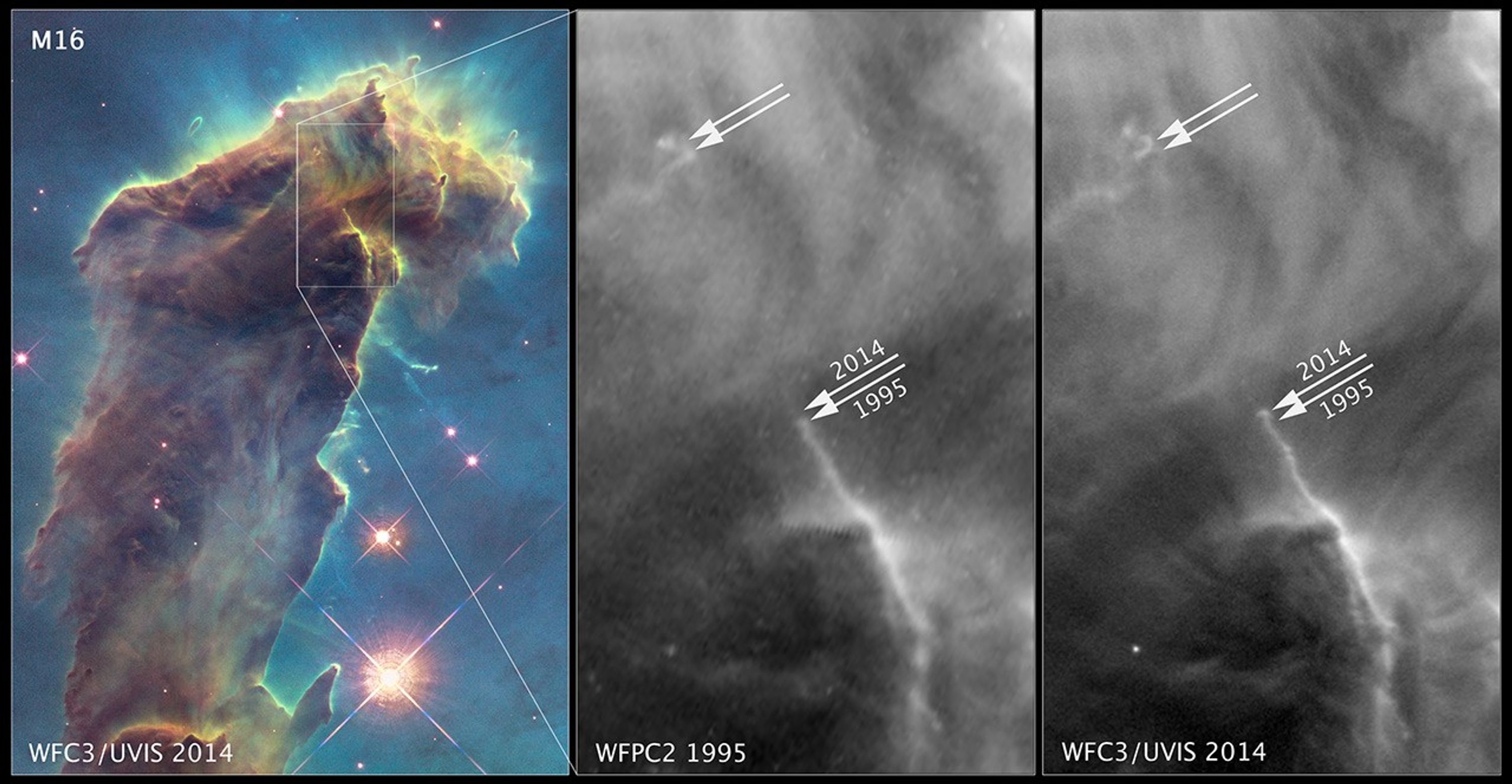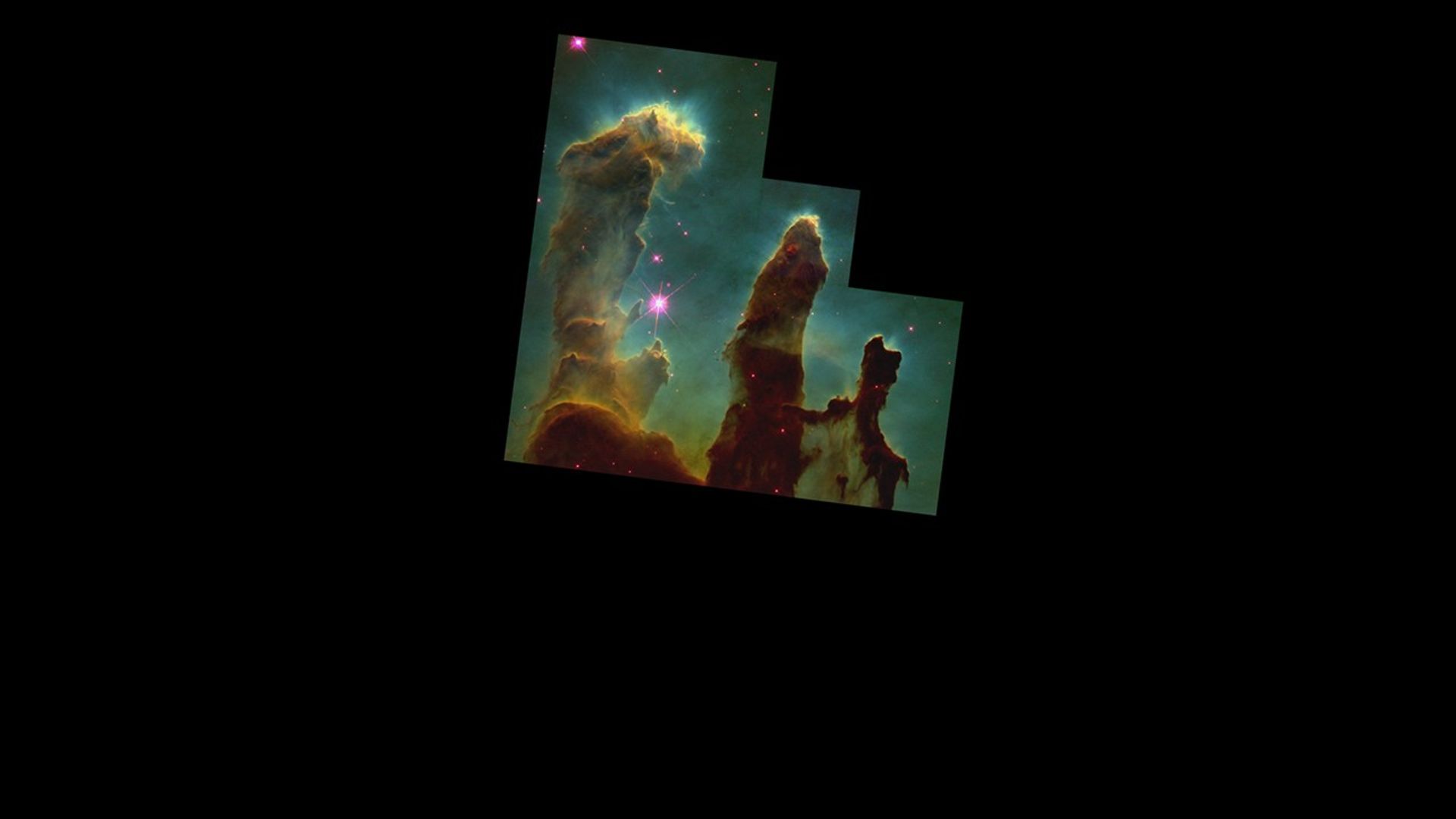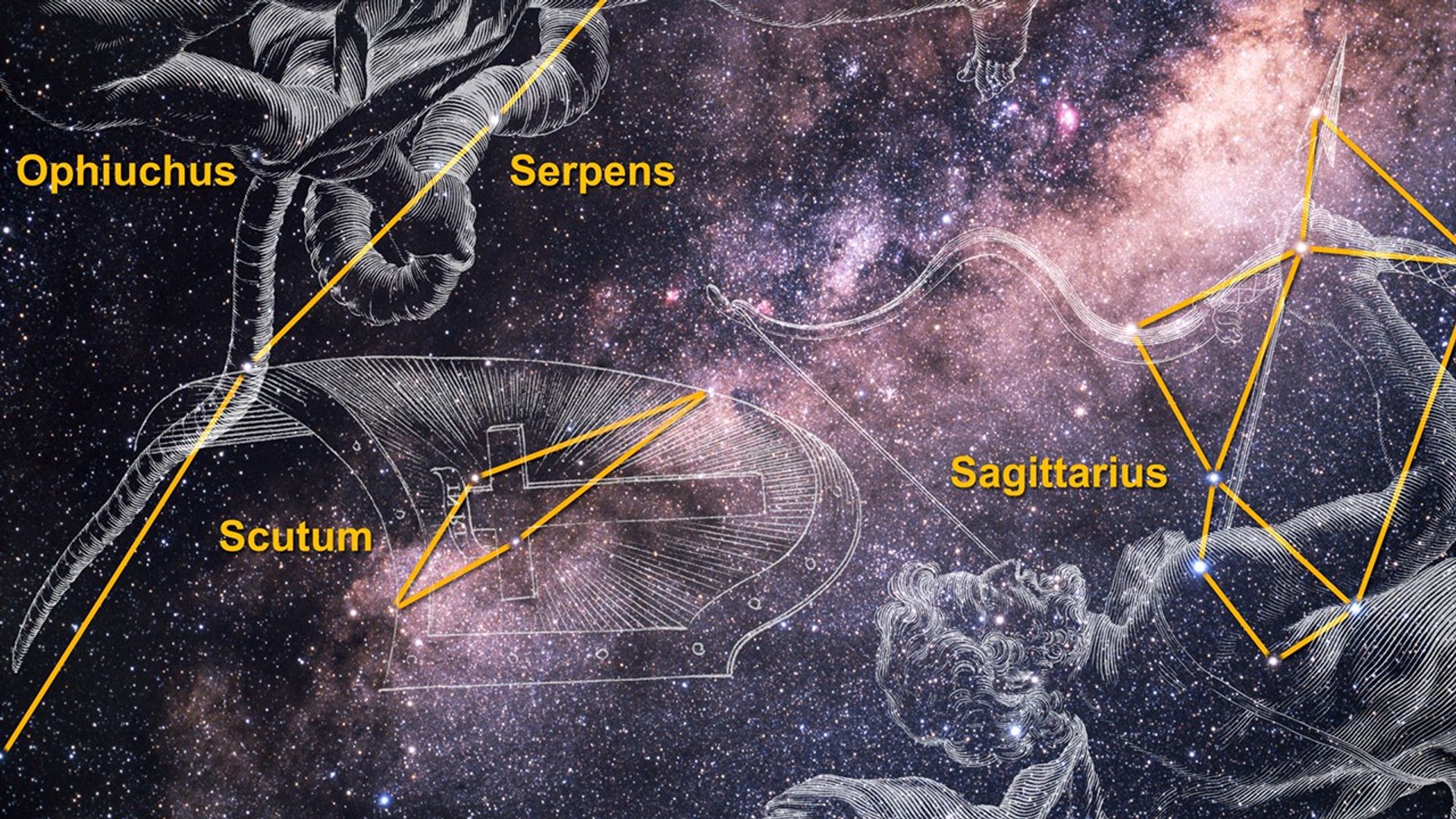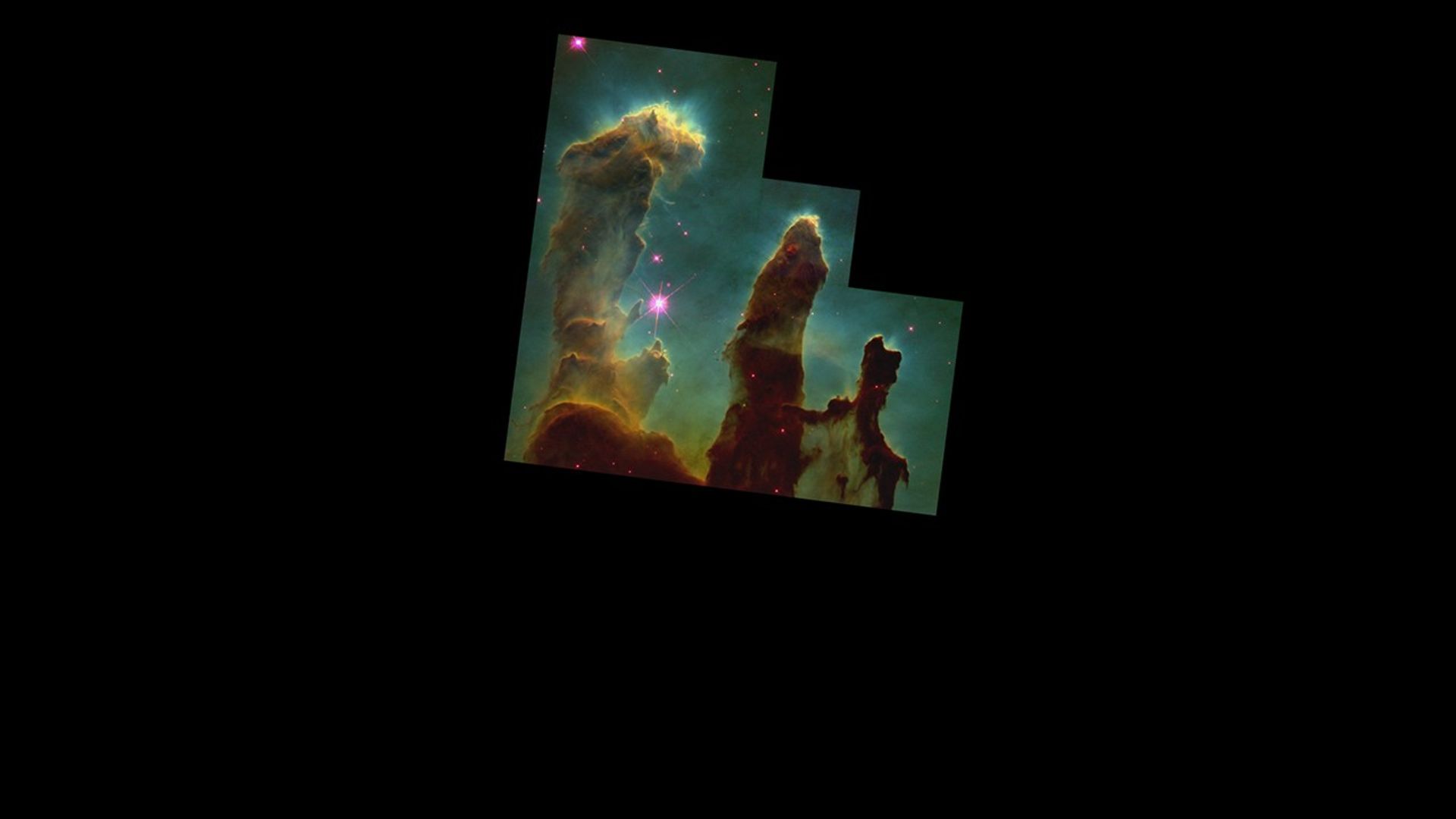1 min read
Zoom into M16 (Narrated)
- Release DateJanuary 5, 2015
- Science ReleaseHubble Goes High Def to Revisit the Iconic ‘Pillars of Creation’
- CreditNASA, ESA, and G. Bacon (STScI); Acknowledgment: NASA, ESA, the Hubble Heritage Team (STScI/AURA), the Digitized Sky Survey ((DSS), STScI/AURA, Palomar/Caltech, and UKSTU/AAO), T.A. Rector (NRAO/AUI/NSF and NOAO/AURA/NSF) and B.A. Wolpa (NOAO/AURA/NSF), and A. Fujii
Related Images & Videos
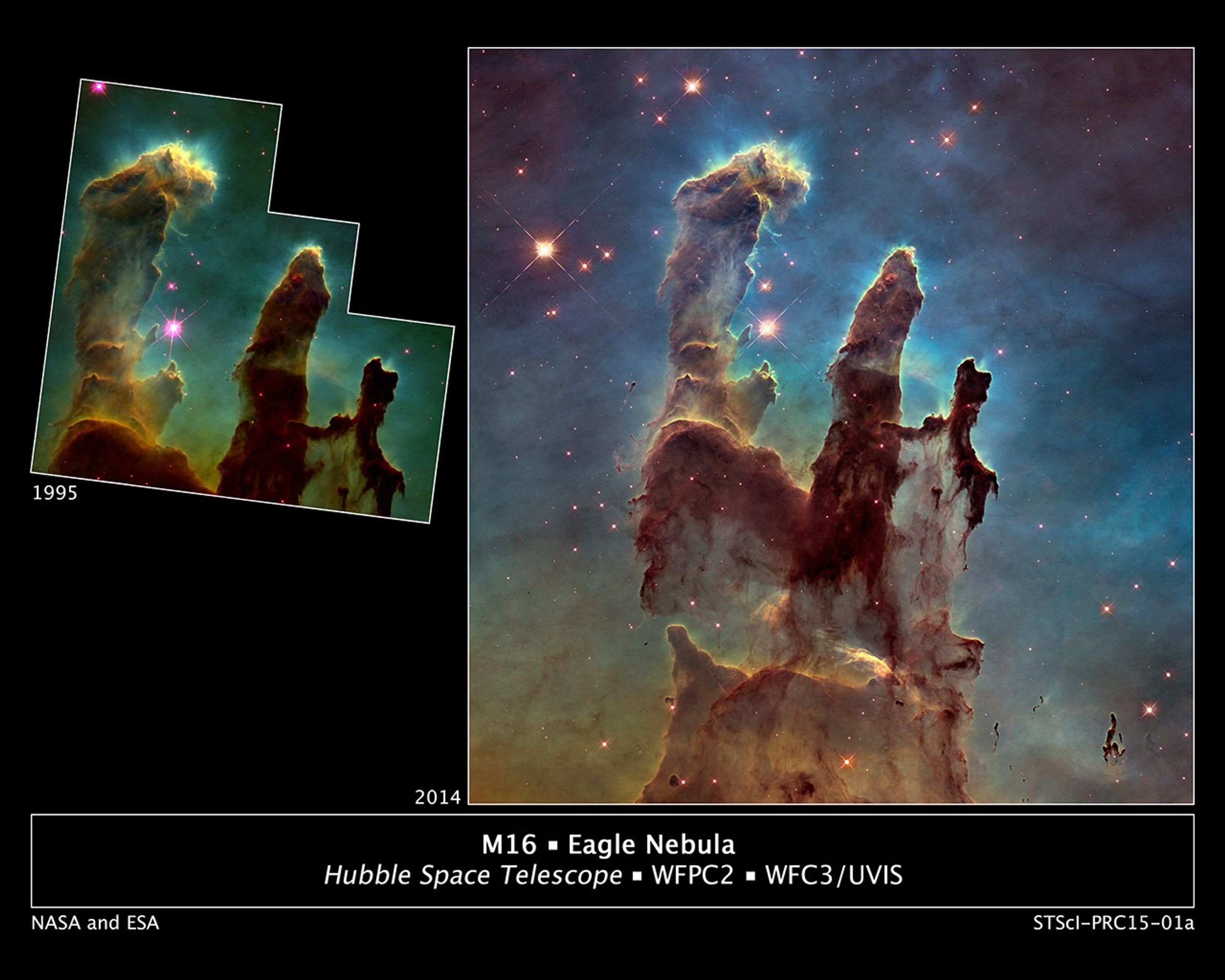
Hubble Revisits the Famous 'Pillars of Creation' to Celebrate 25th Anniversary
NASA's Hubble Space Telescope has taken a bigger and sharper photograph of the iconic Eagle Nebula's "Pillars of Creation," shown at right. The original 1995 Hubble image of the gaseous towers, taken with Hubble's Wide Field Planetary Camera 2, is shown at left. Astronomers...

2014 Hubble WFC3/UVIS Image of M16
NASA's Hubble Space Telescope has revisited the famous Pillars of Creation, revealing a sharper and wider view of the structures in this visible-light image. Astronomers combined several Hubble exposures to assemble the wider view. The towering pillars are about 5 light-years...
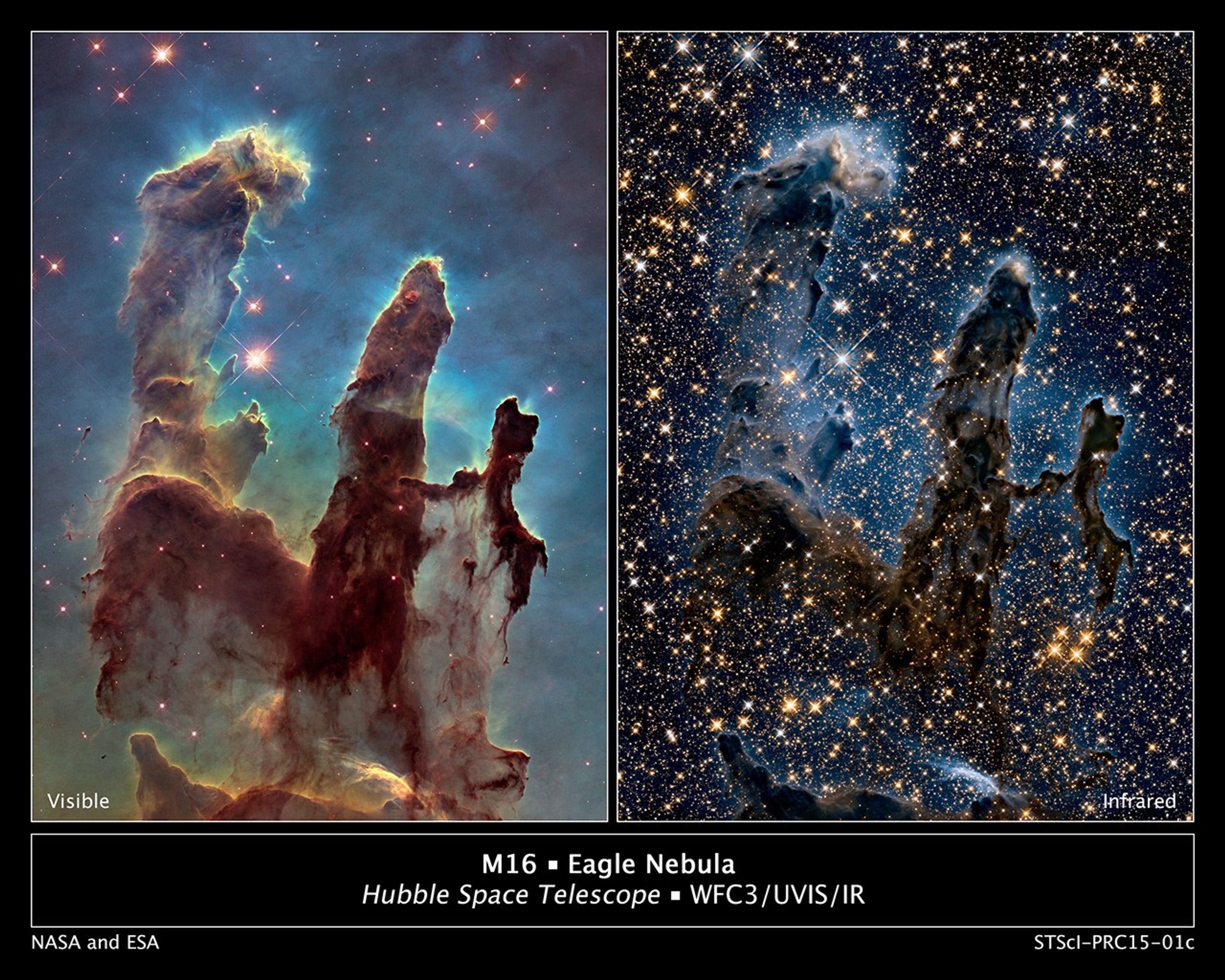
A View of the Pillars of Creation in Visible and in Near-Infrared Light
These images by NASA's Hubble Space Telescope reveal how different the iconic Pillars of Creation appear in visible and in near-infrared light. In the visible-light image at left, astronomers combined several exposures to show a wider view of the pillars and the surrounding...

2014 Hubble WFC3/UVIS Image of M16 (Cropped)
NASA's Hubble Space Telescope has revisited the famous Pillars of Creation, revealing a sharper and wider view of the structures in this visible-light image. Astronomers combined several Hubble exposures to assemble the wider view. The towering pillars about are 5 light-years...

2014 Hubble WFC3/IR Image of M16 (Cropped)
This NASA Hubble Space Telescope image, taken in near-infrared light, transforms the pillars into eerie, wispy silhouettes, which are seen against a background of myriad stars. The near-infrared light can penetrate much of the gas and dust, revealing stars behind the nebula as...

A Near-Infrared View of the Pillars of Creation
This NASA Hubble Space Telescope image, taken in near-infrared light, transforms the pillars into eerie, wispy silhouettes, which are seen against a background of myriad stars. The near-infrared light can penetrate much of the gas and dust, revealing stars behind the nebula as...
Share
Details
Claire Andreoli
NASA’s Goddard Space Flight Center
Greenbelt, Maryland
claire.andreoli@nasa.gov


























